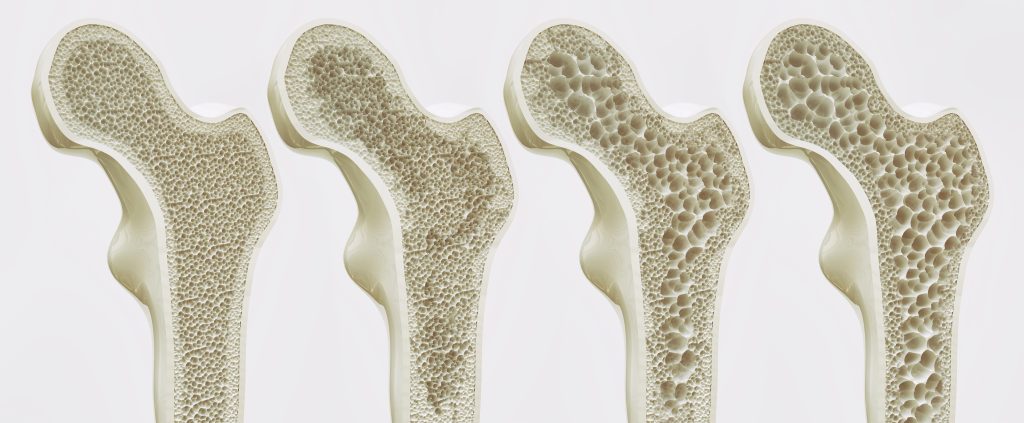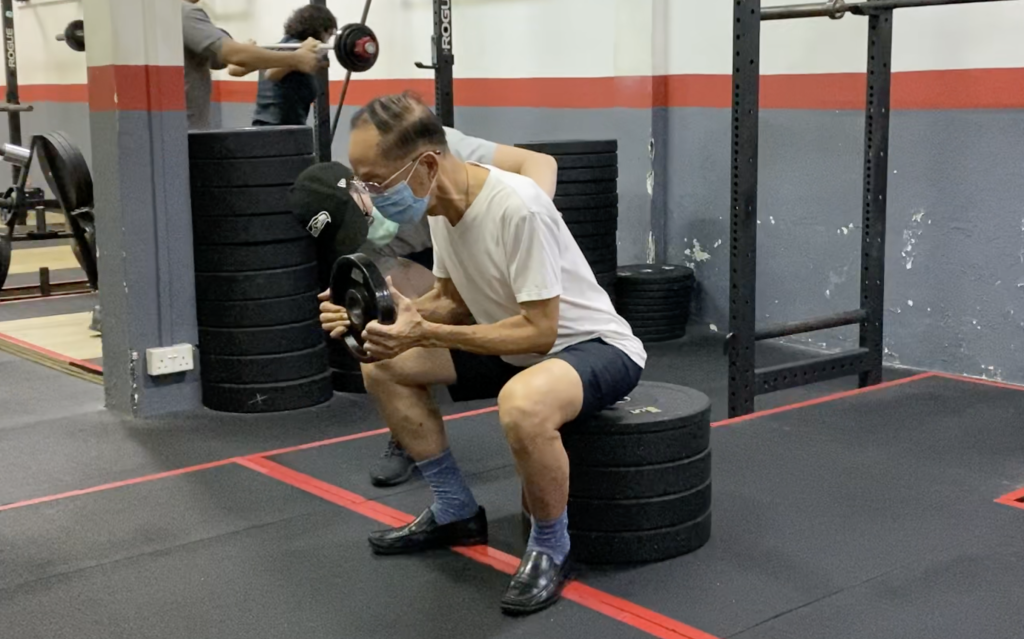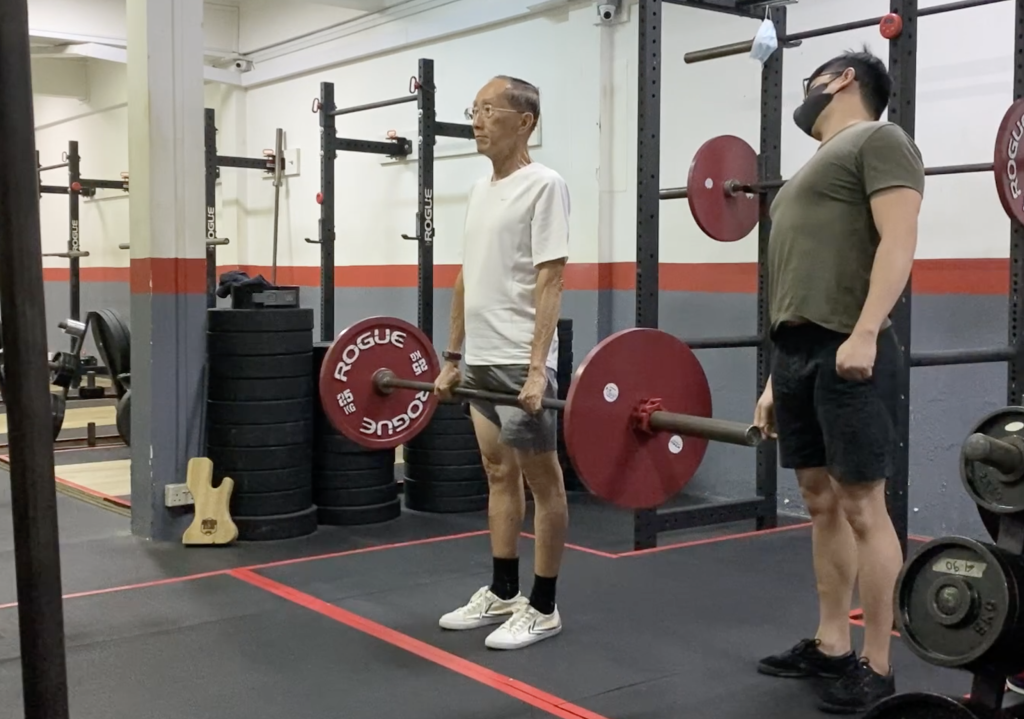
In her forties, Patricia did a bone density test and found out that she had osteopenia. The loss of bone density gradually worsened over the next 20 years. In 2017, she was diagnosed with osteoporosis – a degenerative condition where her decreased bone mineral density and bone mass meant that her bones were more susceptible to fractures
Patricia’s doctor gave her 2 choices: use a new type of medication… or to do specific exercises that would increase bone density.
Having been on osteoporosis drugs for more than a decade (and still have declining bone density), she wasn’t keen on medication. Instead, she chose to try specific exercises that would increase bone density. At that point of time, she didn’t know what these exercises were. Trusting her doctor’s recommendation, she decided to give it a shot. It was only when she stepped into our gym that she found out that it was barbell strength training.
Five years later, at the age of 66, Patricia is now a national record holder for powerlifting. But more importantly, her latest bone density tests show that she doesn’t have osteoporosis any more. In this video, she talks about how lifting improved her bone density by 7% within just one year.
Sounds unbelievable? It’s actually expected for bone density to increase after embarking on a proper barbell strength training program – we see this all the time. However, for people that are unfamiliar with strength training, they can’t believe Patricia didn’t hurt herself (or fracture her bones) while lifting seemingly “heavy” weights. In this article, we address why lifting weights, when carefully supervised, is actually ideal for treating osteoporosis.
If I have fragile bones, won’t lifting weights hurt me?
“How can someone with osteoporosis lift heavy weights without getting compression fractures?”
“If your bones are already so fragile, shouldn’t you be avoiding dangerous activities?”
“Even if you’re trying to stay active, isn’t lifting weights too extreme? Especially since you’re older, shouldn’t you be doing something gentler like swimming or walking?”
These were common reactions to Patricia’s decision to take up lifting weights. Perhaps it’s conventional wisdom, but most people default to medication or surgery to treat their conditions that can be improved with lifestyle modifications like engaging in strength training.
If one is willing to put in the effort, lifting weights can benefit someone with osteoporosis but of course, one has to be smart about it and not just go into the gym and lift weights willy-nilly.
What is osteoporosis, and why does it matter?
One of the most common conditions that occur with ageing is osteopenia, where your bone mineral density and bone mass starts to decrease. Over time, through the ageing process, hormonal changes and lack of physical activity, this may progress to osteoporosis, where there is significant loss of bone mineral density.
Frail bones are endemic to elderly ageing populations. While women are more affected than men, anyone over 65 is at risk, with osteoporosis affecting up to 70% of people by the time they’re in their 80s. Singapore has one of the highest rates of osteoporosis in Asia.
Why does this matter? The word osteoporosis comes from Latin for “porous bones”. It’s a condition that places one at high risk for fractures. For example, a simple fall could result in a hip fracture for someone with osteoporosis and may need surgery to repair, often with long and painful rehabilitation. In addition to that, the statistics of post hip fractures are pretty grim – the 1-year mortality rate of older adults post hip fracture is approximately 30%.
In fact, osteoporosis is a silent epidemic. Many people don’t know they have it until they’ve fallen, fractured a bone and then taken a bone density test that tells them that they have osteoporosis.
Bone strength is like money in the bank. Like planning your finances for your golden years, one should start building up as much bone strength as you can in your younger days. If that wasn’t done in the past, the next best time is now.
How do I prevent or slow down osteoporosis?
Our bones are alive. They’re constantly remodeling – new bone gets built and old bone breaks down. Just like muscles, bones will strengthen and grow if they’re made to grow, but also weaken if they’re not being stressed.
Bone density loss is almost inevitable with age. But the good news is, osteoporosis is actually reversible to some degree. We know that mechanically loading your bones will improve their density. In fact, bones that aren’t stressed regularly will get weaker; conversely, bones that are progressively loaded will get stronger.
So in addition to adjusting your eating habits and other lifestyle changes, doctors will often recommend exercise, because (some) exercise stresses the bones and makes them denser.
The question is, what kind of exercise? The exercise activities recommended for the older adults are usually taichi, aerobics, walking or swimming – these exercises can build cardiovascular fitness, and are supposedly “safe” and low-impact enough not to damage their fragile bones.
But this is a wrong approach. Without an external load, these exercises don’t deliver enough training stress to the bones. This is because bone remodeling needs significant stimulus for bones to grow and respond with increased density. This sort of stimulus only comes with exercises that includes external loading on the body that progressively gets heavier over time, i.e. barbell strength training.
Weights are heavy – why don’t fragile bones fracture?
Because we don’t start with heavy weights!
Imagine someone lifting weights. Your mental picture is usually a young muscular dude lifting barbells with some gigantic weight on it. You’ll likely never notice those just starting out, and tend to assume that everyone lifts heavy weights from the beginning. That’s probably why the average person thinks, “If I lift that much, my bones/back/knees will shatter, so why isn’t Patricia, who has osteoporosis, getting compression fractures from lifting that much weight?”
There are 2 very important things to note when you’re first starting out to reverse your osteoporosis. One is to select the lifts that works the best for improving bone density, and the next is to start with loads that are slightly challenging, but that you can still perform with good technique. Then, you gradually work up from there.

How does this work? All effective training programs make use of the Stress-Recovery-Adaptation (SRA) Cycle, based on Hans Selye’s General Adaptation Principle.
We go through three phases when we train: the stress phase where the training stresses the body; the recovery phase where our body attempts to recover from the stress imposed; and the adaptation phase where our body adapts to the previous stress by increasing our baseline of performance. (It’s also the reason why effective training requires consistency).
By repeating this process over and over, and adding a bit more weight to the barbell each time, you get stronger. This applies to both muscle, connective tissue and bones. Muscles grow through protein synthesis, and bones grow through the remodeling process mentioned earlier.
This process doesn’t happen overnight. Patricia trained for years before she was lifting record weights. Because of the repeated SRA cycle, her bones got denser and stronger over time – enough to reverse her osteoporosis, making her bones more resilient to fractures.
Why go to a gym to strengthen bones?
While you can embark on a training program on your own, having a coach to oversee your training will ensure that loading and programming of the exercises are tailored to your specific needs. We’ll make sure that you start at the right weight and use the right increments, that your technique is good, and above all, that everything is safe.
If you’re already osteopenic or osteoporotic, no problem. It’s never too late. Even if you’ve been sedentary your whole life, there’s a manageable load for you to start on day 1. We’ve worked with many detrained older adults with injuries, pain and stiffness – some clients start off with just their bodyweight and/or require certain modifications to the lifts. When ready, we’ll gradually start adding load and/or reduce the needed modifications to the lifts, a little bit at a time.

To get your bones denser and stronger, light weights and high reps are not optimal; instead, you’ll use “heavier” weights and lower reps. Over time, these multi-joint or compound barbell lifts that stress as many bones as possible at the same time done with heavy weights gets your bones to respond and remodel.
Throughout the entire training process, you’ll keep a detailed training log. This not only logs your training, but also helps us to further improve and individualise your training programs to ensure continued sustainable progress over the long term.
Strength training is a must for older folks
Lifting weights isn’t just for the young and fit. It’s not just for young guys wanting to get jacked or athletes looking to improve sports performance.
In fact, older adults have the most to gain from strength training, because they have the most to lose from not being strong. Even a slight improvement in bone density and muscle strength can pay huge dividends. It’s the difference between deteriorating health, and maintaining your physical independence and quality of life. It’s the difference between sitting back and letting the ageing process do its thing, versus doing something positive for your golden years.
Getting older doesn’t mean you need to accept the ageing process as inevitable, and osteoporosis isn’t something that you have to accept and live with. You can slow down or in some cases reverse the process if you fight hard against it. So go forth and be more resilient to osteoporosis by building stronger bones now.

